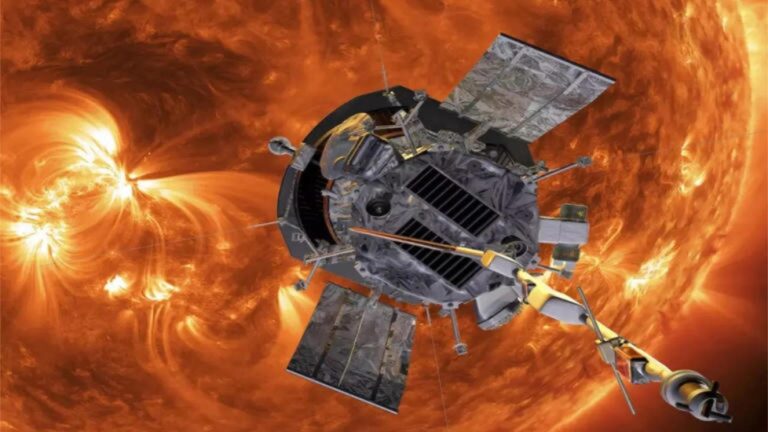![]()
New Delhi, India – The countdown has begun for the highly anticipated launch of India’s inaugural solar mission, Aditya L1, aboard the PSLV rocket from Sriharikota. Following the success of Chandrayaan-3, India’s lunar mission, the Indian Space Research Organisation (ISRO) is now embarking on a groundbreaking mission to explore the Sun and its impact on space weather. Aditya L1 is designed to provide remote observations of the solar corona and in-situ observations of the solar wind at L1, which is approximately 1.5 million kilometers from Earth. Here are the key highlights of this solar mission:
Mission Objectives: Aditya-L1 aims to study various aspects of the Sun, including coronal heating, solar wind acceleration, coronal mass ejections (CMEs), solar atmosphere dynamics, and temperature anisotropy. ISRO points out that the L1 point in the Halo orbit offers a unique advantage of continuous solar observation without the occurrence of eclipses. Studying the Sun in detail can provide insights into stars within the Milky Way and other galaxies.
About Aditya-L1: Aditya-L1 is a specialized satellite dedicated to comprehensive solar study. It features seven distinct payloads, including five developed by ISRO and two in collaboration with academic institutions. After its scheduled launch, Aditya-L1 will remain in Earth-bound orbits for 16 days, during which it will undergo five maneuvers to gain the necessary velocity for its journey. The spacecraft is equipped with seven scientific instruments, with the primary payloads being the Visible Emission Line Coronagraph (VELC) for corona imaging and spectroscopy studies and the Solar Ultraviolet Imaging Telescope (SUIT) for photosphere and chromosphere imaging.
Launch Timing: The Sun observatory mission is set to launch from the second launch pad at 11:50 am on Saturday. ISRO Chairman S. Somanath stated that it would take 125 days for the mission to reach its intended radius.
The Spacecraft’s Trajectory: Initially, Aditya-L1 will be placed in a low Earth orbit, which will later be made more elliptical. Subsequently, the spacecraft will be propelled toward the Lagrange point L1. This journey will take nearly four months. The Aditya-L1 payloads are expected to provide crucial information to understand phenomena such as coronal heating, CMEs, and space weather.
Payload’s Data Output: The Visible Emission Line Coronagraph (VELC), the mission’s primary payload, will transmit approximately 1,440 images per day to the ground station for analysis once it reaches its intended orbit. This data will be instrumental in advancing our understanding of the Sun’s behavior.
First Data Availability: The satellite is expected to be placed into orbit in mid-January, with instrument testing commencing thereafter. By the end of February, regular data transmission is anticipated, although it may take some time as each instrument undergoes testing.
Studying Solar Quakes: Dr. R. Ramesh, a top scientist from the Indian Institute of Astrophysics (IIA), emphasized the importance of round-the-clock Sun monitoring. Solar quakes, or Coronal Mass Ejections (CMEs), on the Sun’s surface can impact Earth’s geomagnetic fields. These CMEs can travel at speeds of approximately 3,000 kilometers per second.
ISRO Chairman’s Prayers: In a gesture of faith and hope, ISRO Chairman S. Somanath visited the Sri Chengalamma Parameshwari temple in Sullurpeta to offer prayers for the success of the Aditya-L1 mission.
India’s Aditya-L1 solar mission promises to unlock new insights into the Sun and its influence on our planet’s space environment, with potential implications for our understanding of stars throughout the universe. Stay tuned for further updates on this historic mission.
Reference:
www.msn.com







